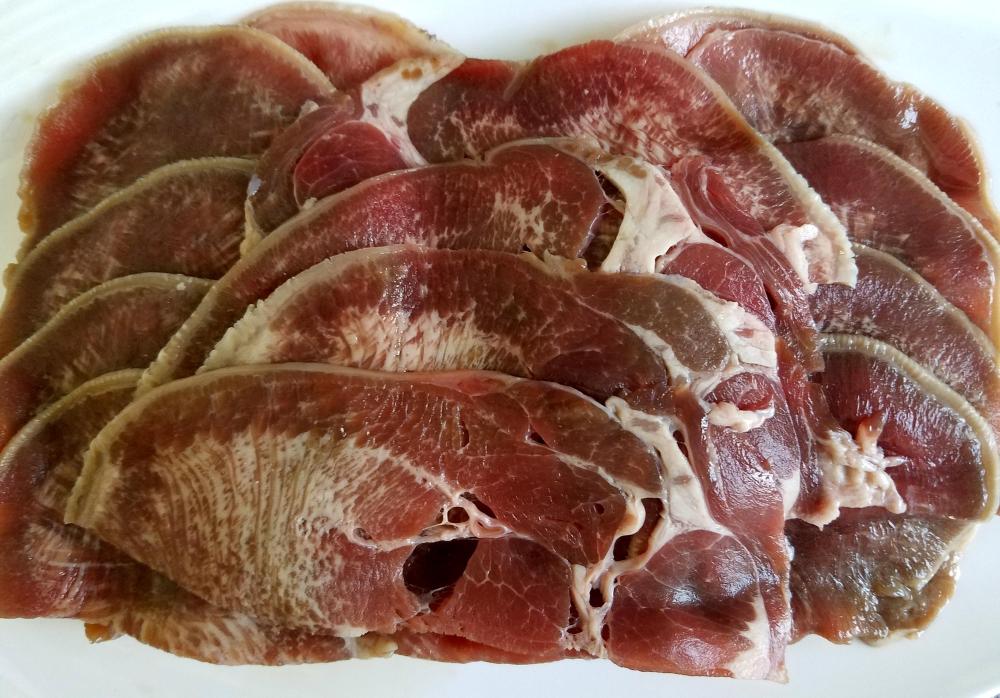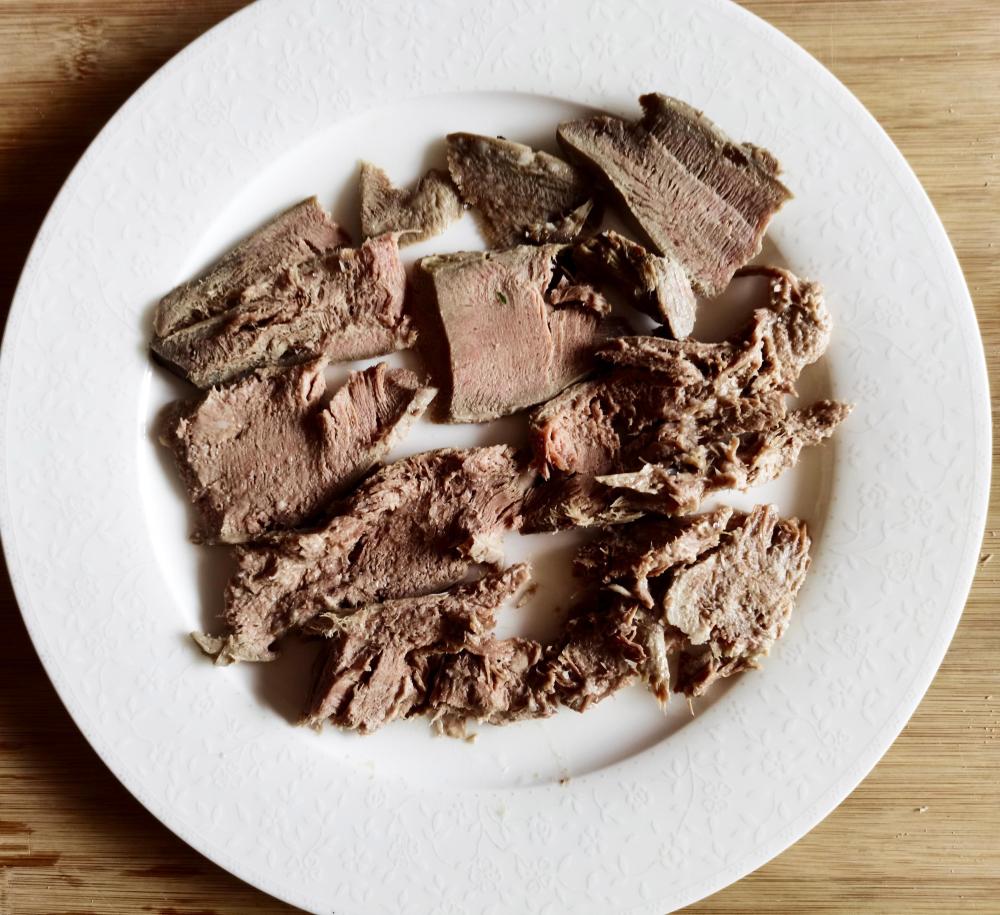Here is the fourth instalment and we still haven’t left the head yet. Nor shall we for a few more days yet.
First, we will be talking tongues. Tongues used to be more popular than they are now; time for a revival, perhaps. Get them while they’re still a cheap choice.
Pig's Tongue
Beef tongues (aka ox-tongue or neat’s tongue) were the main choice in most western countries, usually boiled, roasted or pickled, but in recent years consumption has declined. The problem with beef tongue is its sheer size. They are large and they need cooking whole. For this reason, they were more often cooked by butchers shops and sold by the slice as cold cuts. I remember well being sent off to school, happily clutching my lunch bag of tongue and pickle sandwiches. Pre-cooked beef tongue is still sold by one of my local supermarkets here in China.
Cooked and Sliced Beef Tongue
But, pig’s tongues have long been number one in those countries where pork is the more popular meat of choice, such as in most of Asia. And they are more manageable in terms of size. The flavour is not so pronounced as that of beef tongues, but that can work to the cook’s advantage, allowing for other flavours to be incorporated. They are also less fatty than beef tongues.
猪舌 (zhū shé), pig’s tongue is by far the main choice here in China, sold in most supermarkets or in the wet markets by the pork butchers. Weighing up to a kilogram / 2.2 lbs at most, they are more suitable for family cooking, but like most hard-working muscles they require long cooking to reach optimum tenderness. This can take at least a couple of hours of boiling, but the tongues are often pressure cooked, drastically reducing the time to around 30 minutes.
As ever, they need cleaning first and any connective materials, excess fat etc removed. However , they are cooked with the skin intact. It is removed afterwards. Well, as much as possible; those skins can be tenacious. Then the tongue is sliced and used in whatever recipe the meat is to be finally employed in. I’ve used it in stir fries, fried rice, curries etc, but a favourite is just to eat it cold with pickles.
Slow Cooked Pork Tongue
I’m not going to list all the places where tongue remains easily available. That covers the globe. It seems to be one of the more acceptable offal choices. Beef tongues are sold by some butchers and pig’s tongues are available in those ethnic markets which have no taboos against pork – Latin American, Asian, and East European in particular. Unlike for some other parts, there are several recipes for tongue on the internet – ranging from Mexican tacos with tongue and avocado to creamy Filipino lengua; from langue de porc a la ravigote from France to Polish ozory w galrecie or jellied tongues.
And if that lot doesn’t get you talking in tongues, what will?




